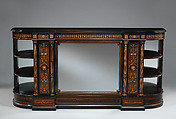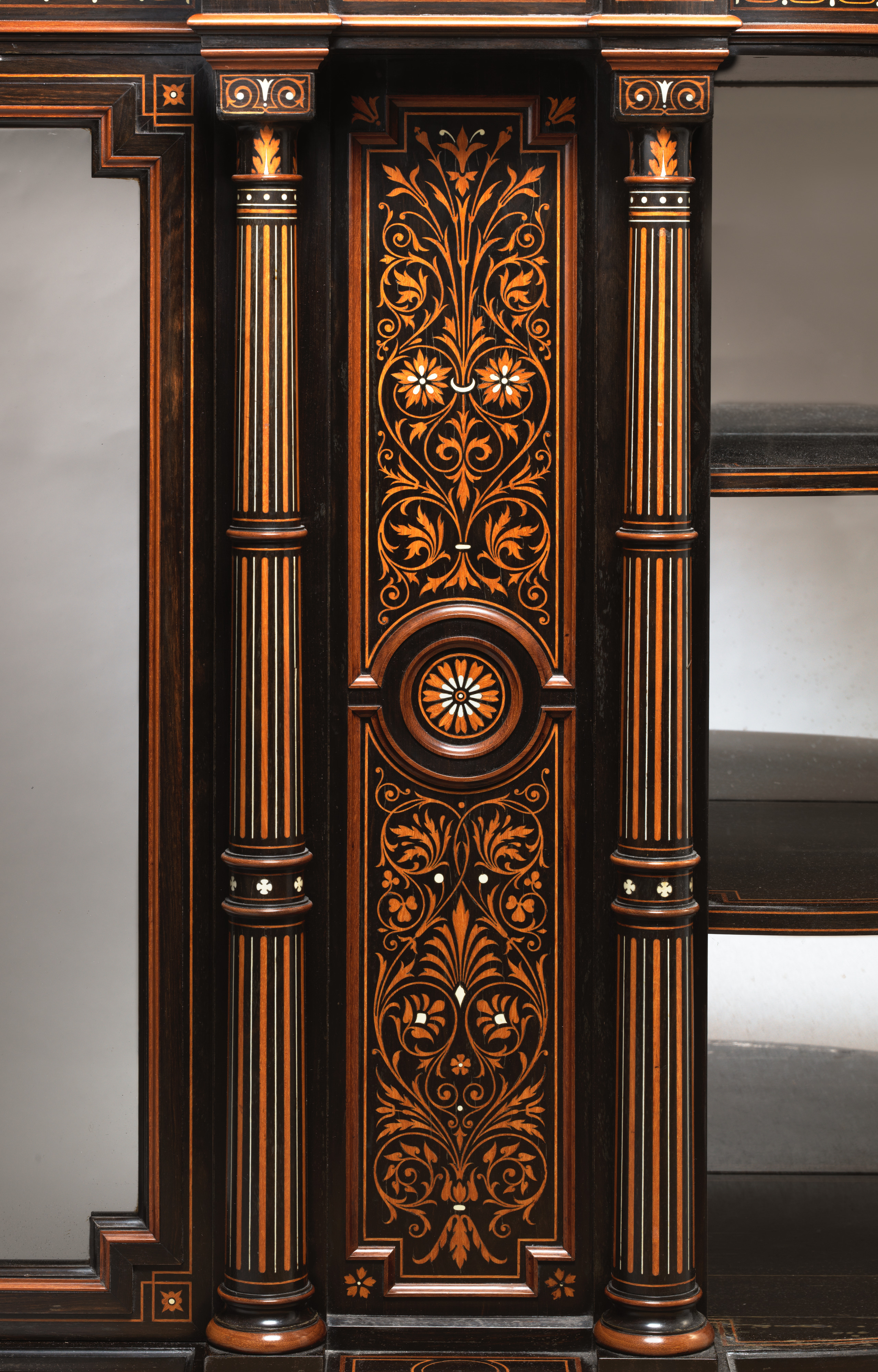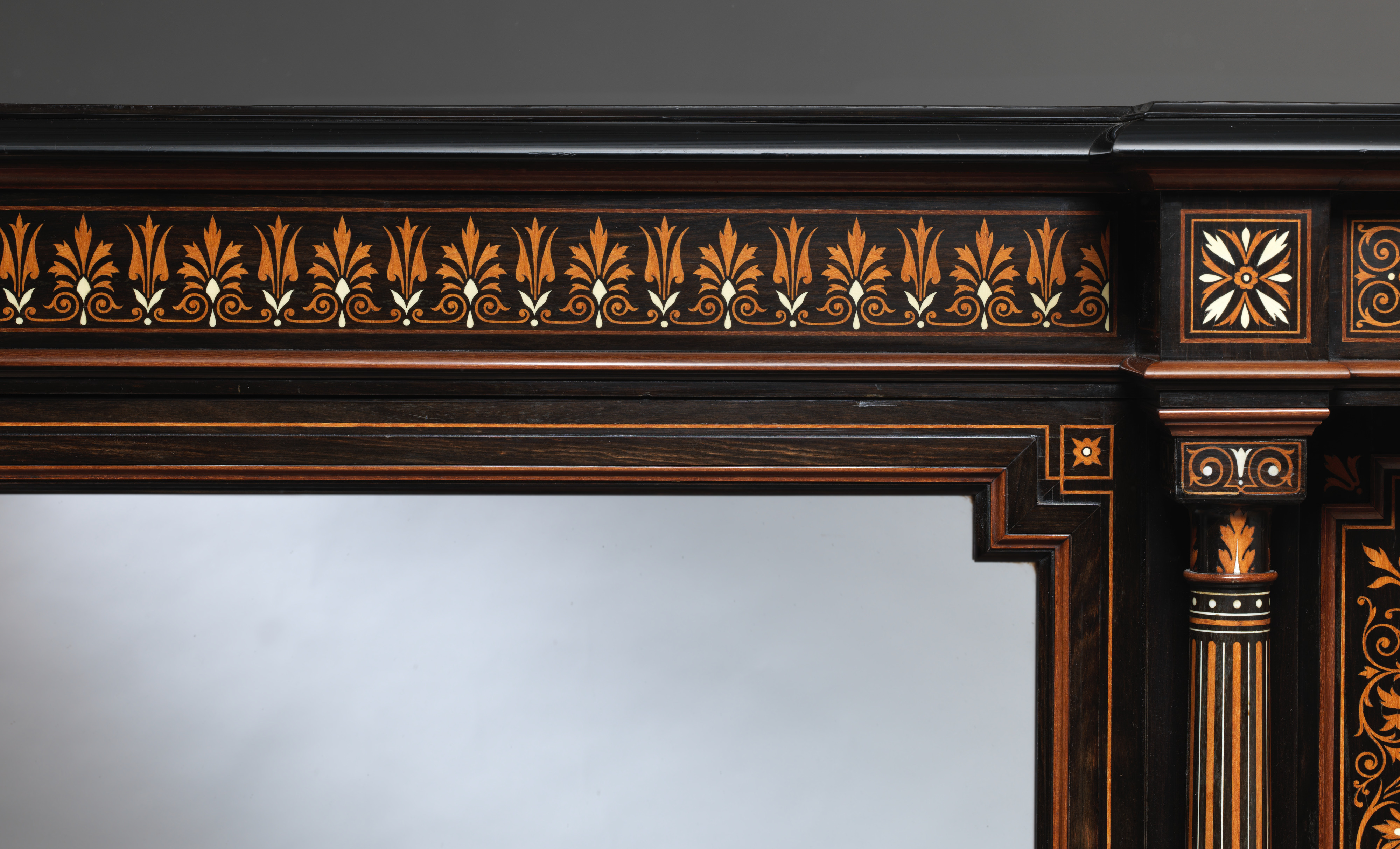Cabinet
Manufacture attributed to Jackson & Graham
Design attributed to Owen Jones British
Not on view
The shop of Jackson & Graham, at 37–38 Oxford Street, London, did not deal exclusively in furniture; it was, in fact, the main premises of a firm of "upholsterers, cabinet makers, carpet-manufacturers, interior decorators and importers of curtain materials and bronzes" (as described in the London Post Office Directories) that catered to the most sophisticated Victorian tastes. In the mid-1880s the firm employed between six hundred and a thousand workmen, among them a number of foreign specialists in marquetry and wood inlays. The firm’s products were shown in the great international exhibitions, starting with the 1851 Crystal Palace Exhibition in London, where an entire stand was devoted to them. Twenty-seven years later, in 1878, an even more lavish exhibition was mounted by Jackson & Graham for the Paris Exposition Universelle. One reviewer singled out the marquetry work on furniture, which comprised the majority of the firm’s exhibits: "…the inlays are in many cases so fine as to present the appearance of delicate penciled work; and, to crown the whole, the workmanship is so perfect that even with the aid of a powerful magnifying glass scarcely the slightest imperfection is to be found anywhere." Among the marquetry pieces was a tall cabinet of ebony inlaid with ivory and mother-of-pearl designed by the architect and furniture designer Bruce J. Talbert and illustrated by a line engraving in the catalogue. The marquetry ornament of this cabinet consisted of an eclectic mixture of Moorish and neoclassic motifs applied to a cabinet form derived from Italian Renaissance models.
Similar marquetry elements distinguish this low cabinet, which combines Renaissance-inspired neoclassic motifs on a form essentially imitative of the Renaissance. This interpretation of styles was, of course, characteristic of furniture produced at this period, as was the inclusion of a large sheet of mirror glass dominating the central space. The extreme skill of the marquetry work, equal to the finest examples of this technique dating from the eighteenth century, together with the effect of sober richness conveyed by its proportions and decoration, qualify this cabinet as a tour de force of high Victorian furniture production.
Due to rights restrictions, this image cannot be enlarged, viewed at full screen, or downloaded.
This artwork is meant to be viewed from right to left. Scroll left to view more.




